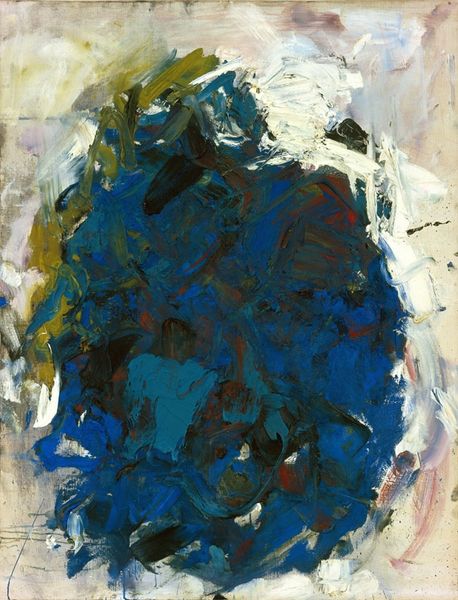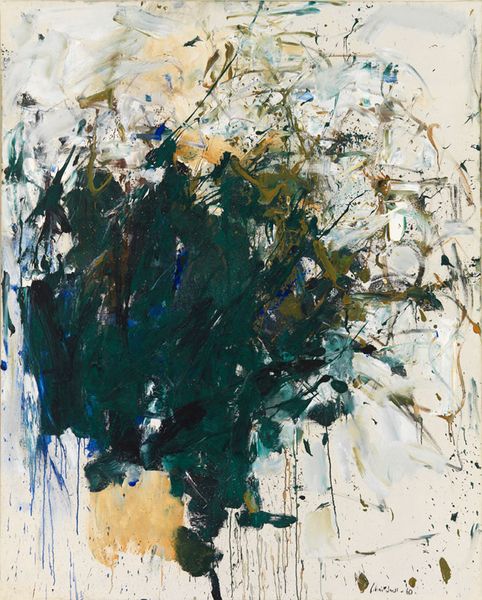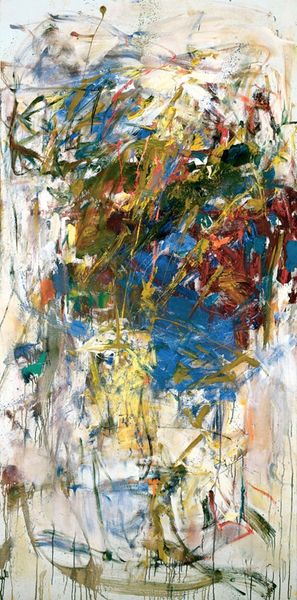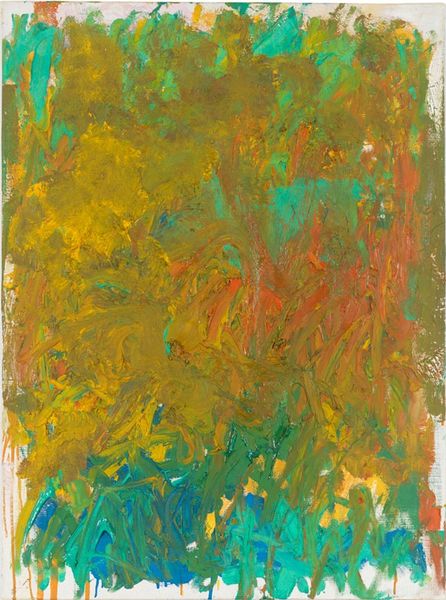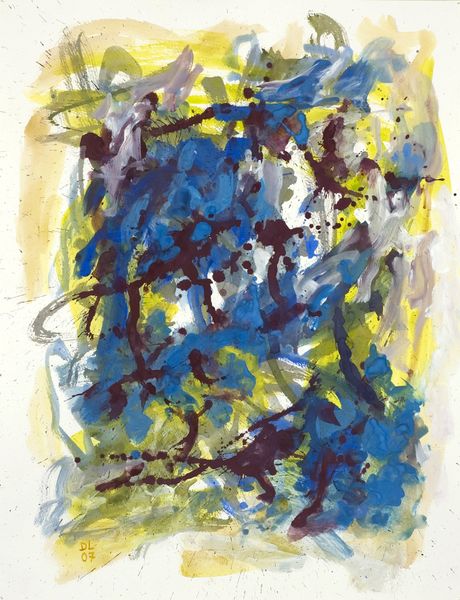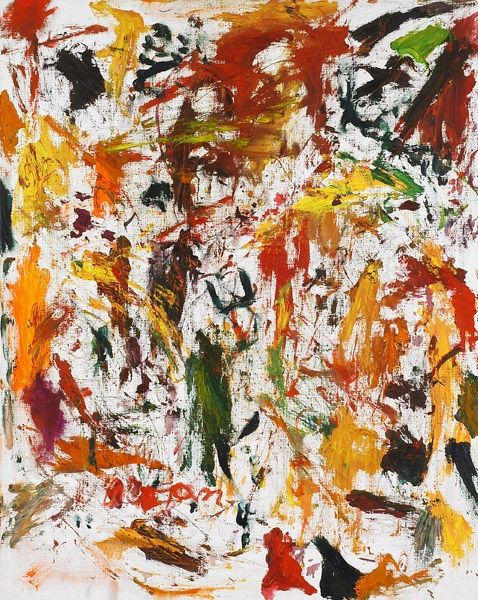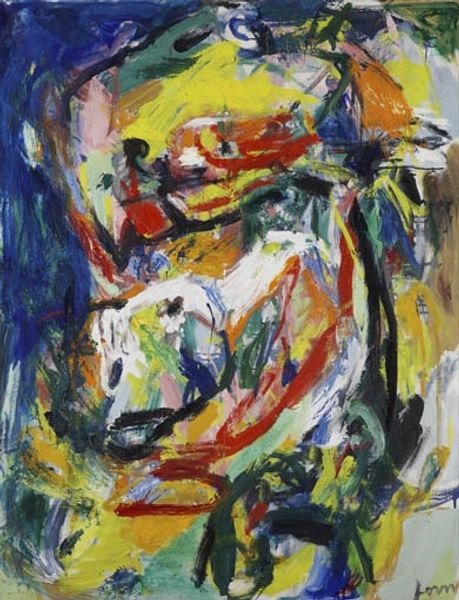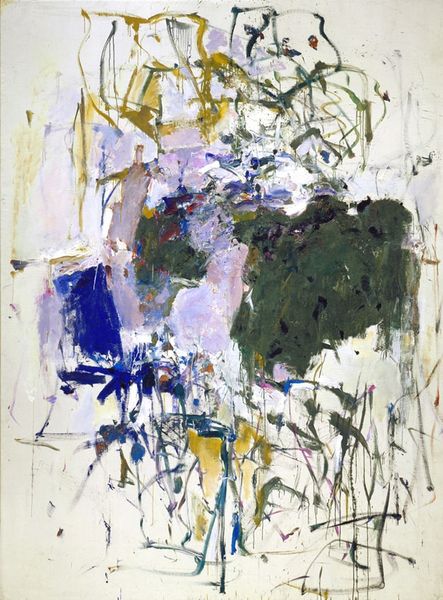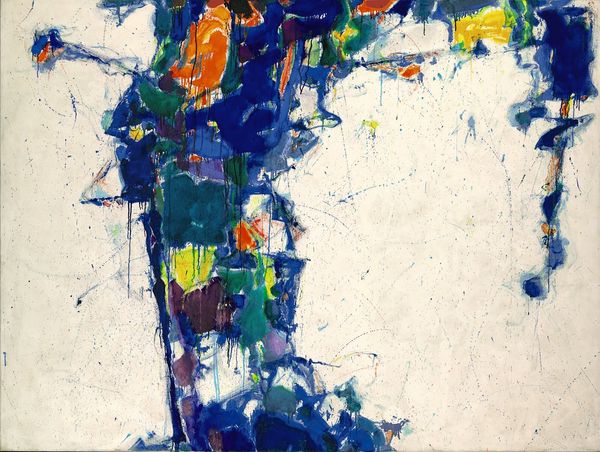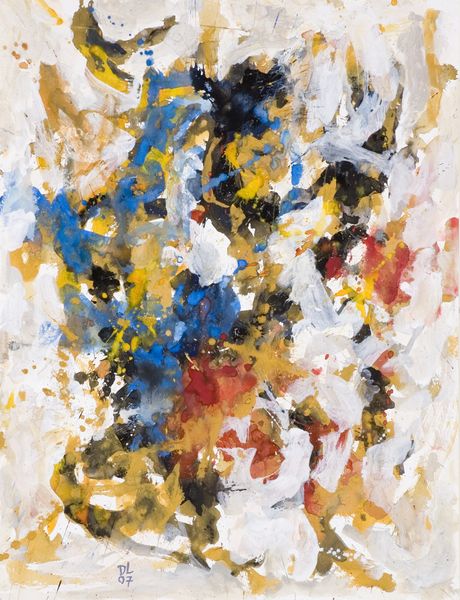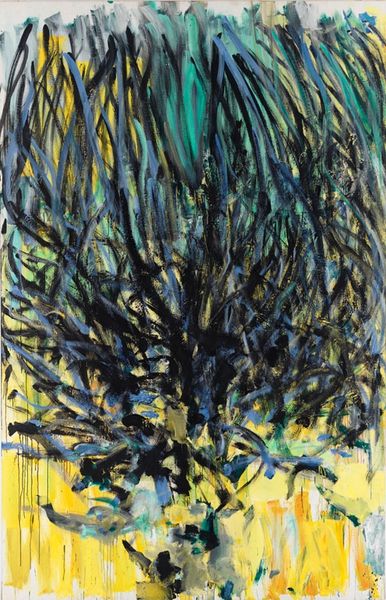
Copyright: Joan Mitchell,Fair Use
Editor: So, here we have Joan Mitchell’s "Tournesols," painted in 1976, using acrylics. It definitely feels… explosive. The colors are so vibrant and layered, creating a real sense of movement. What strikes you most when you look at this work? Curator: I see it as a deeply personal expression of Mitchell's experience in a male-dominated art world. Think about Abstract Expressionism – traditionally seen as a masculine field. Mitchell challenges this through her scale and intense emotion, staking her claim. Do you notice how the bold, unrestrained brushstrokes, especially the yellows and blues, don't shy away from assertiveness? Editor: I see what you mean about the assertiveness. I hadn't thought of it in terms of gender dynamics, more just raw energy. It’s like she’s actively pushing back against any notion of fragility. Curator: Exactly! And think about the title, "Tournesols," which is French for sunflowers. Sunflowers, often associated with Van Gogh, become a symbol for Mitchell. She is planting her roots within art history but making something resolutely her own, using the raw emotion as a form of protest against expectations. How do you interpret that now? Editor: That completely reframes how I see it. It’s not just abstract, it’s a declaration, almost defiant, within a broader cultural context. Curator: Precisely. And it reveals how her use of abstraction can communicate concrete socio-political realities. It's less about pretty flowers and more about Mitchell's stance. Editor: It's amazing how much context shifts the way you perceive the art itself. It feels more meaningful now. Curator: It's a starting point. This painting demonstrates the crucial dialogue between personal experience and cultural narratives, urging us to reconsider art history’s gendered assumptions.
Comments
No comments
Be the first to comment and join the conversation on the ultimate creative platform.

